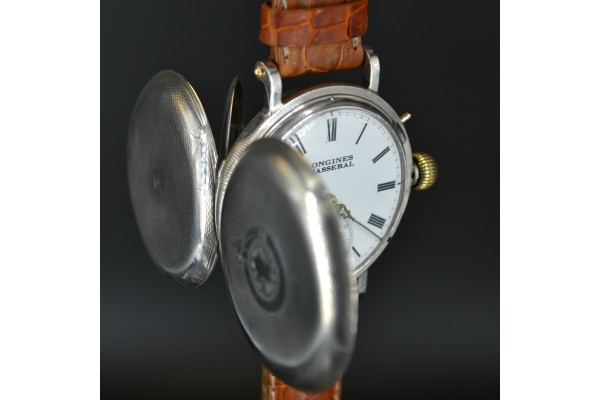Longines
In the early 1800's Swiss watchmaking was truly a cottage-industry. Watches were produced using the "etablissage" method, where individual tradesman working out of small studios or their homes would produce parts (or sub-assemblies) which were then assembled and sold under the auspices of a single brand. In 1832, Auguste Agassiz began selling etablissage-produced watches under the name "Agassiz & Compagnie" and was particularly successful selling those watches in North America.
Agassiz opened a workshop in St Imier, Switzerland. He operated what today would be called a "Home Business". Workers would work on watches out of thier own homes, whigh Agassiz would later sell.
Sometime between the years of 1854 and 1866 Agassiz handed down over the operation of the watchmaking business to his nephew Ernest Francillon.
Francillon wanted to modernize the production of watches and believed that bringing all the final assembly and finish operations together into one factory would be a more efficient method of production. To accomplish this, Francillon built a factory on a piece of land known as "Les Longines" and the Longines brand was born. This method of production proved to be very successful, and by the early 1900's the Longines factory employed over 1000 people and had achieved worldwide distrubution and success with its products.
The Longines "Winged Hourglass" (actually a winged clepsydra for those who care about such things) is the oldest registered trademark for a watch company, having been registered in 1880. The Winged Hourglass logo first appeared on Longines watches in about 1867.
The company began producing chronographs in 1879. They later produced aviator watches and cockpit instruments.
In 1912 the company produced the first automatic timekeeping device. From that day Longines has long been associated with time-keeping at major sporting events.
In the 1950's Longines purchased the Wittnauer watch company and marketed a number of very similar lines of watches in the US under both brand names.
In the early 1800's Swiss watchmaking was truly a cottage-industry. Watches were produced using the "etablissage" method, where individual tradesman working out of small studios or their homes would produce parts (or sub-assemblies) which were then assembled and sold under the auspices of a single brand. In 1832, Auguste Agassiz began selling etablissage-produced watches under the name "Agassiz & Compagnie" and was particularly successful selling those watches in North America.
Agassiz opened a workshop in St Imier, Switzerland. He operated what today would be called a "Home Business". Workers would work on watches out of thier own homes, whigh Agassiz would later sell.
Sometime between the years of 1854 and 1866 Agassiz handed down over the operation of the watchmaking business to his nephew Ernest Francillon.
Francillon wanted to modernize the production of watches and believed that bringing all the final assembly and finish operations together into one factory would be a more efficient method of production. To accomplish this, Francillon built a factory on a piece of land known as "Les Longines" and the Longines brand was born. This method of production proved to be very successful, and by the early 1900's the Longines factory employed over 1000 people and had achieved worldwide distrubution and success with its products.
The Longines "Winged Hourglass" (actually a winged clepsydra for those who care about such things) is the oldest registered trademark for a watch company, having been registered in 1880. The Winged Hourglass logo first appeared on Longines watches in about 1867.
The company began producing chronographs in 1879. They later produced aviator watches and cockpit instruments.
In 1912 the company produced the first automatic timekeeping device. From that day Longines has long been associated with time-keeping at major sporting events.
In the 1950's Longines purchased the Wittnauer watch company and marketed a number of very similar lines of watches in the US under both brand names.



